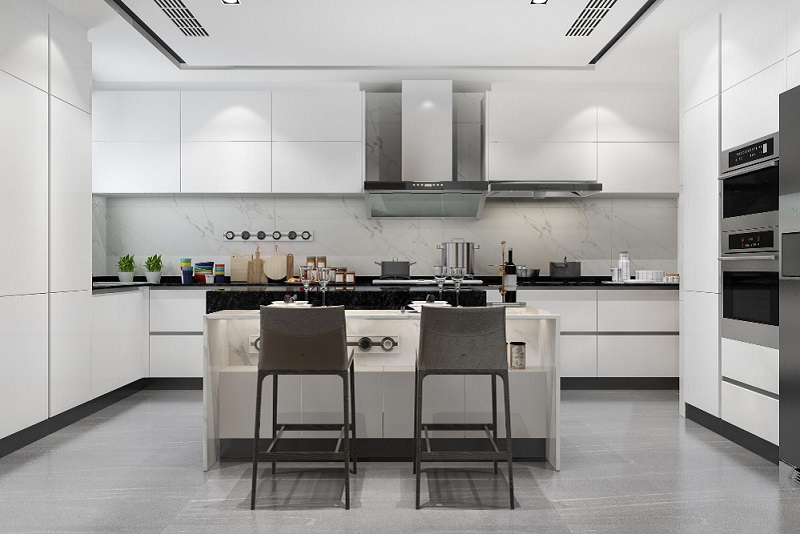Are you itching to refresh your home’s look without spending a fortune? Do you dream of a beautifully styled living space but worry that an interior designer might blow your budget? You’ve come to the right place. This definitive resource will cover how to get creative with affordable design ideas, whether you need a full makeover, a single-room refresh, or you’re merely curious about cost effective interior design strategies.
Interior design on a budget doesn’t mean sacrificing style. In fact, embracing a budget-focused approach encourages you to think outside the box, reuse or upcycle existing pieces, and find low cost home interior design ideas that truly reflect your personality. Throughout this guide, we’ll explore why we need interior design in the first place, what interior styling really means, and the pros and cons of hiring an interior designer—even if you’re working with limited funds.
Table of Contents
What Makes Interior Design On A Budget An Important Topic?

Budget home design ideas matter because they show you how to turn your personal space into a stylish sanctuary without draining your bank account. Many people think you need pricey furniture and designer wallpapers to achieve a polished look, but that couldn’t be further from the truth. In reality, you can implement cheap home interior ideas that offer a classy, cohesive vibe. By using simple tips and tactics, you’ll discover how to take advantage of resources like recycling shops, thrift stores, and clever planning so that every dollar stretches further. Now that you know what to expect, let’s jump right in and see why interior design itself is so vital.
Why Do We Need Interior Design?
Have you ever walked into a house that felt instantly welcoming and balanced? That feeling is no accident—interior design focuses on creating harmony between colours, textures, furniture placement, and décor choices. When you invest time in budget interior design, you’re not just making your space look nice; you’re also shaping how you feel in that space. The right design decisions can lift your mood, make day-to-day life more efficient, and even support better wellbeing.
Beyond aesthetics, thinking about why we need interior design helps you approach your home in a more thoughtful manner. By considering layout and functionality, you can make small rooms feel bigger, find space for family-friendly areas, and design corners that serve multiple purposes. Plus, affordable design strategies prove that flair needn’t come at a high price. Simple changes like strategically placing mirrors near windows or opting for lighter wall colours can add a sense of openness and brightness without any major cost.
Advantages Of Interior Design For Any Home
• Improving Comfort: Thoughtful décor enhances how you unwind. With a cost effective interior design approach, you can enjoy top-notch results without overspending.
• Increasing Functionality: Great design turns cramped corners into practical zones. Clever layout choices help maximise floor space, encouraging better traffic flow.
• Boosting Property Value: A well-styled home is more appealing to potential buyers or renters, so a budget home design can still pay off in the long run.
What Is Interior Styling?
Have you ever scrolled through Instagram, marvelling at gorgeous living rooms, bedrooms, and kitchens that look chic yet inviting? Those photos often reflect the magic of interior styling. While interior design involves broad planning—like layout, structural elements, and large-scale alterations—interior styling focuses on selecting and arranging décor items to create a specific look. These items might include cushions, artwork, lamps, and other accessories that add personality and charm.
Interior styling revolves around creative expertise. It’s about mixing colours, patterns, and textures to craft a distinctive vibe that speaks to your own tastes. Plus, interior styling helps unify disparate décor pieces so that your home feels consistent and harmonious. Using a budget design interiors approach doesn’t mean you miss out on style; in fact, working with limited resources can spark even more creativity.
Interior Stylist Job Description Explained
An interior stylist, sometimes also known as a room stylist, is responsible for pulling together all the aesthetic elements that make a space visually appealing. This job includes selecting colour palettes, arranging decorative items, and ensuring synergy among different furnishings. Often, it means using existing pieces, exploring second-hand markets, or working with restricted budgets to achieve remarkable results. Whether you want a cheap interior decorator or an interior stylist, the end goal remains the same: to make your home shine with personality while respecting your wallet.
Do I Need An Interior Designer?

Many people wonder, “Do I need an interior designer, or can I handle it alone?” The answer depends on your circumstances, your personal preferences, and how comfortable you feel tackling design decisions on your own. Hiring an interior designer on a budget can be a wise investment if you crave professional guidance but don’t know where to start. Designers bring knowledge of trends, spatial planning, and materials, all of which can save you from costly mistakes.
That said, if you enjoy researching styles, shopping around, and experimenting with décor, going solo might be both fun and cost-effective. Thanks to resources like social media, design blogs, and budget-friendly furniture retailers, DIY interior design is more accessible than ever. Plus, you’ll gain confidence making creative decisions as you go along. If your schedule or design know-how is limited, though, a professional might be the perfect solution for ensuring a stress-free remodel.
Whether you end up hiring a cheap interior decorator or tackling it yourself, the goal is to find a method that suits your time, wallet, and style. Drawing up a plan, setting priorities, and testing out small changes can provide clarity about whether you want professional support or not.
Pros And Cons Of Hiring An Interior Designer
• Pros:
– Expert insights for tricky layouts and design dilemmas.
– Access to trade discounts and a network of contractors.
– Saves time by streamlining choices and coordinating projects.
• Cons:
– Extra cost added to your decorating budget.
– Limited creative control if you prefer a DIY approach.
– Potential mismatch in design visions if communication isn’t clear.
Conclusion
Creating budget interior design magic is all about blending creativity with practicality. You’ve explored how to repurpose furniture effectively, use simple paint tricks, and incorporate clever hacks to curb expenses. Even if you’re new to home styling, it’s possible to refresh your space by focusing on easy wins and staying thoughtful about where your money goes.
